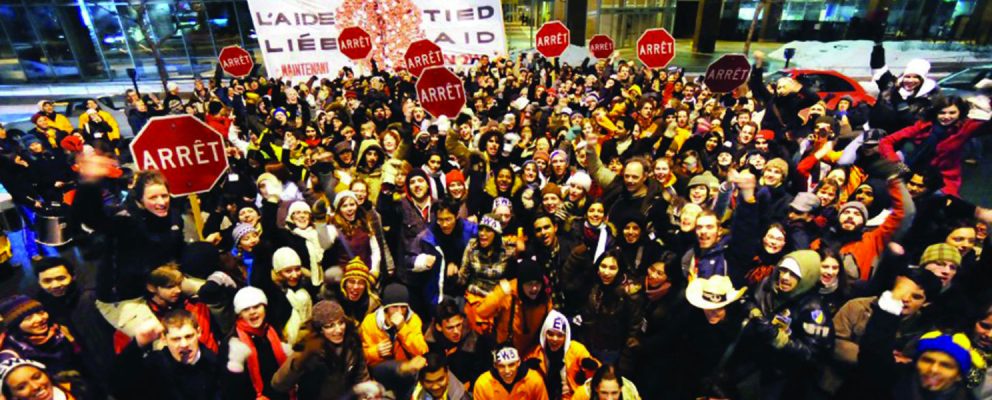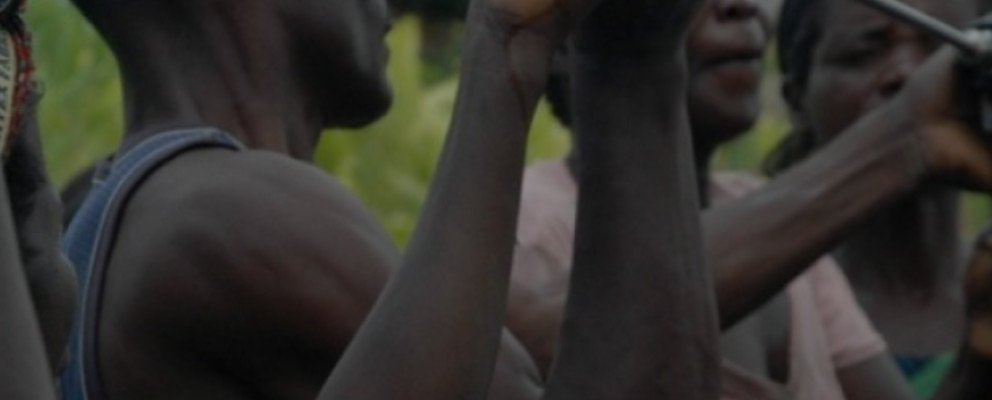2008
Untie Aid
A successful four year campaign encouraging countries to source local products to make goods and services purchased for development initiatives more appropriate, efficient, and cost-effective.
Tied aid requires that the recipients of Canada’s foreign aid—some of the world’s poorest countries—purchase exclusively Canadian goods and services with the available funding. Under this system, aid money is wasted because of the inherent advantage to Canadian companies: competitive bids for cost-effective development projects are not viable.
In September 2008, after four years of campaigning by EWB Canada, the Canadian government announced that it would completely untie all of Canada’s aid by 2012.
What is tied aid?
Engineers Without Borders has worked on dozens of donor projects across Africa. At least three out of four have suffered setbacks in their projects because their aid was tied.
Tied aid mandates developing nations to buy products only from donor countries as a condition for development assistance.
Essentially, we give with one hand, and take with the other. Here is a dollar, we say, but you have to spend it on our wheat, our consultants, our textbooks. You might be able to buy these in your own country, but if our aid is tied, they’ll have to be shipped half way around the world to get to you. In fact, the OECD calculates that aid can be made 15-30% more effective by untying it.
Why is it important?
The Organization for Economic Cooperation and Development (OECD) estimates that tied aid raises the cost of goods and services by up to 30 per cent. Untying Canada’s aid not only added $90-180 million to our annual aid budget but also helped make goods and services purchased for development initiatives more appropriate, efficient, and cost-effective by encouraging countries to source local products.
What is the significance of untying Canada’s aid?
Untying aid is one of the “no-brainers” that compassionate countries can do. Rather than leading in this area, Canada was at the back of the pack.
According to the latest statistics, 40% of our bilateral aid was tied to buying goods and services from Canada. That’s $800-million that was being spent ineffectively.
The Government of Canada announced that it would untie all of our bilateral aid by 2012. With a roughly 25% increase in effectiveness of $800 million, that’s the equivalent of $200 million extra in aid every year – with nothing more than the stroke of a pen.
What was EWB’s role in the untying of aid?
In early 2004, EWB received an award from the Canadian Manufacturers and Exporters, and was invited to their recognition ceremony. Upon accepting the award, co-CEO Parker Mitchell issued a challenge to the companies in attendance: start looking for a new way to be competitive, because EWB is going to bring tied aid to an end!
EWB members worked on multiple levels to achieve this change.
MP Engagement:
In 2005-2006, Members of Parliament received over 8500 personally signed postcards from their constituents asking them to untie aid. From 2005 onwards, chapters had (often multiple) meetings with over 30 MPs.
Public Engagement:
In addition to the postcard campaign, in January 2007 EWB members attending the National Conference took to the streets of Montreal with 3000 mini stop signs reading “Stop Tied Aid”. They talked to thousands of Montrealers about tied aid, and sent the 3000 signed stop signs to Members of Parliament.
Decision-Maker Engagement:
From 2005-2007, EWB put the pressure on in meetings with Canadian decision-makers, talking to Paul Martin (then Prime Minister), Robert Greenhill (then president of CIDA), the Finance Minister, the Minister of International Cooperation, Governor General Michaëlle Jean, and other senior people from the Privy Council Office, the Prime Minister’s Office, and CIDA.
In every case, decision-makers were confronted with the question, “Why hasn’t Canada untied its aid?” along with sophisticated arguments against the existing policy.

